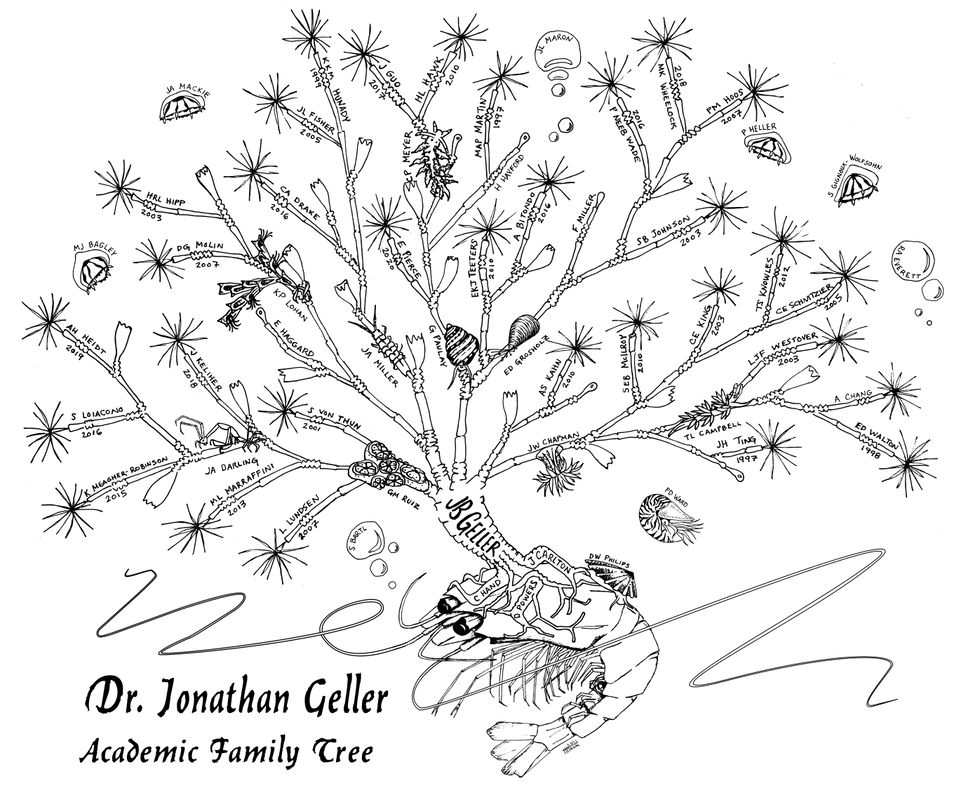The academic tree of Dr. Jonathan Geller brings together a vibrant community of students and collaborators, originally established in 1980. The shrimp and epizoic hydroid celebrate a species of hydrozoan, Earleria corachloeae, that was first discovered growing on the carapace of the glass shrimp, Pasiphaea pacifica, during a 2006 MLML cruise on the P/V Point Sur and was described in Widmer et. Al 2009. The base of the JB Geller colony is attached to the carapace of the shrimp of science by the stolons of three formative mentors who are accompanied by two mollucan mentors (Nautilus pompilius and Lottia scabra). Tentacle-bearing hydranths represent each master’s degree student; in addition, developing student buds hitherto lack tentacles. These many student hydranths emerge along five main branches that correspond to phylogenetic themes among thesis projects, counterclockwise from right: lower Metazoans (branches Cnidaria and Porifera); Mollusca (branches Bivalvia, Cephalopoda, and Gastropoda); Arthropoda; Deuterostomia (branches Echinodermata and Chordata); and community ecology and metabarcoding. Nine close research affiliates live among the colony as California-native as well as non-indigenous epifaunal species (left to right: Caprella mutica, Bugula neritina, Botryllus schlosseri, Pentidotea resecata, Eubranchus rustyus, Calliostoma tricolor, Mytilus edulis, Diadumene lineata, and Hermissenda crassicornis). Four post-doc hydromedusae and the bubbles of special friends and colleagues hover among the shrimp and colony. Finally, abundant gonangia acknowledge the wealth of student and research collaborations not explicitly named.
Click HERE for the PDF © HL Hawk 2021
Click HERE for the PDF © HL Hawk 2021

